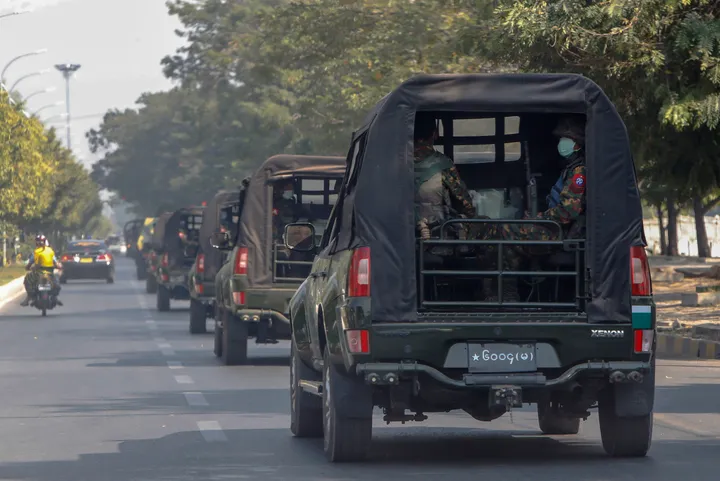In the early 1990s, when Bhanwari Devi tried filing a police complaint against five men who had raped her, an on-duty police officer mocked her. She was not attractive enough to warrant the attention of the alleged rapists, he said.
Devi, a woman who belonged to the lower-caste Kumhar community, was dragged from a field in her village in the western Indian state of Rajasthan and gang-raped in front of her husband, a farm labourer like herself.
The accused men were upper-caste Gujjars — landowners on whose fields people like Devi work as peasants — a practice that often mirrors slavery.
Despite the humiliation and roadblocks she faced while navigating India's lethargic justice system, Devi persisted. The case finally went before a judge in 1995. That’s when the biggest shock came.
The accused men were acquitted of rape charges for lack of evidence. What riled human rights activists even more than the acquittals, was the content of that judgement.
“An upper-caste man could not have defiled himself by raping a lower-caste woman,” the judgement said.
It has been more than two decades since Devi’s case became a rallying cry for lower-caste communities, but little has changed for the most vulnerable segment of society.
The deeply entrenched caste system, which finds its roots in Hinduism, and was made worse through colonial institutionalisation, continues to work against tens of millions of Indians.
Last month, a 19-year-old Dalit woman was brutally raped in the Hathras city of the Uttar Pradesh (UP) state. Her story is the same as Devi’s and many others. She was working in a field when four men attacked her. They tied a rope around her neck, dragged her along the field, broke her spine, and cut her tongue. She lived for two weeks before succumbing to her injuries.
Police have arrested the accused men. They belong to the upper-caste Thakurs.
“Upper-caste men express their power and authority by inflicting pain on people of lower caste, particualrly on Dalit women,” says Dr Anderson Jeremiah, a professor of religion at Lancaster University.
“Dalit women are nobody, they don't have any social status, no individual identity. They are treated as property of upper-caste men,” he tells TRT World.
Steeped in tradition
According to the Cophenhagen-based International Dalit Solidarity Network, 10 Dalit women are raped in India every day.
Just in the month of September, there have been three reported cases in which Dalit girls were raped in UP, the youngest just 14, who was hanged from a tree.
The Hathras girl’s case received media attention mainly because she was transferred to a hospital in New Delhi, the capital, for treatment.
India's collective psyche is still recovering from the assault and murder of a girl on a New Delhi bus in 2012. The accused men were hanged earlier this year.
But when it comes to Dalit women, Indian authorites have gone the extra mile in hushing up the case. The girl’s brother says the victim’s body was cremated in secrecy and the family wasn’t allowed to attend the funeral.
Various footage has surfaced where police can be seen manhandling and stopping reporters from entering the village. In one case, a reporter was arrested as he tried to meet the girl’s family to write about their ordeal.
The UP state government is run by BJP’s chief minister, Yogi Adityanath, a controversial Hindu monk. His officials have deployed police cordons around the Hathras village and stopped opposition Congress leaders from visiting the area.
Even more sinister is the coming together of the local elite - the upper-caste community and supporters of the Hindu nationalist Bharatiya Janata Party (BJP) - in support of the accused men.
Dr Jeremiah says that two-thirds of India’s population live in rural areas where the upper-caste people own almost all of the farmlands. This means they also control local councils or Panchayats, which dispense justice in cases such as a property dispute or an extramarital affair.
“Until 2003 or 2004, Dalits could not even legally own land in India,” he says.
“Very often upper caste men take advantage of their authority over dalit comminity becasue they are landlords, they control resources in a village, they inflict pain by raping and attacking women for its own sake.”
The 1950 Indian constitution, written by B R Ambedkar, himself a Dalit, gives equal rights to everyone. But on the ground, the power remains in the hands of upper-caste men who make up the Panchayat.
“Many of the local village systems are run by local landlords who control the resources which means that even if it is enshrined in the constitution that everybody has equal rights, at grassroots, that’s not the case”.
Over the years, India has introduced a quota system. It helps schedule castes and ensure they get government jobs and seats at educational institutions. But BJP and its ideological mentor the RSS oppose it, saying that it undermines meritocracy.
Yet the decades of the caste-based reservation system hasn't translated into mass land ownership for Dalits, who still own less than 1 percent of any land in India. They can't go against a village landlord who controls 90 percent of land, he says.
The influence of the caste-based system was obvious in early October when an upper-caste Panchayat organised a rally in support of the men accused of raping the 19-year-old Dalit girl.
Prime Minister Narendra Modi’s BJP came to power on the back of the Hindu nationalist vote and the Hindutva doctrine, which stresses India’s Hindu religious identity.
But Dr Jeremiah says that this system of belief has been the reason for social and economic isolation of Dalits for centuries.
“Any dalit mobilisation would be determinetal to the projection of Hindusim as the national religion of India,” he says.
“That’s why BJP is very careful that this news shouldn't be seen as a problem of a Hindu society.”
























